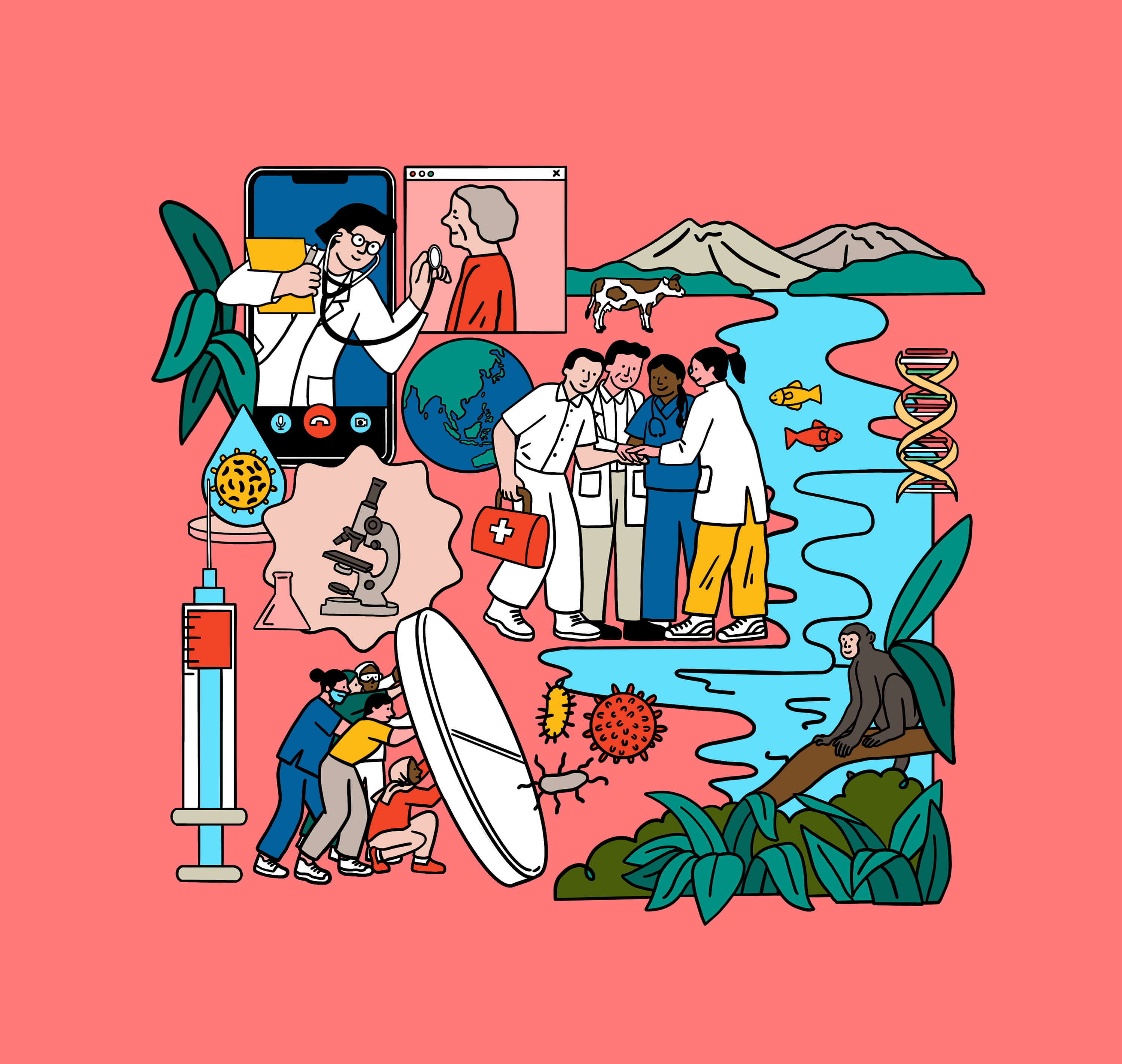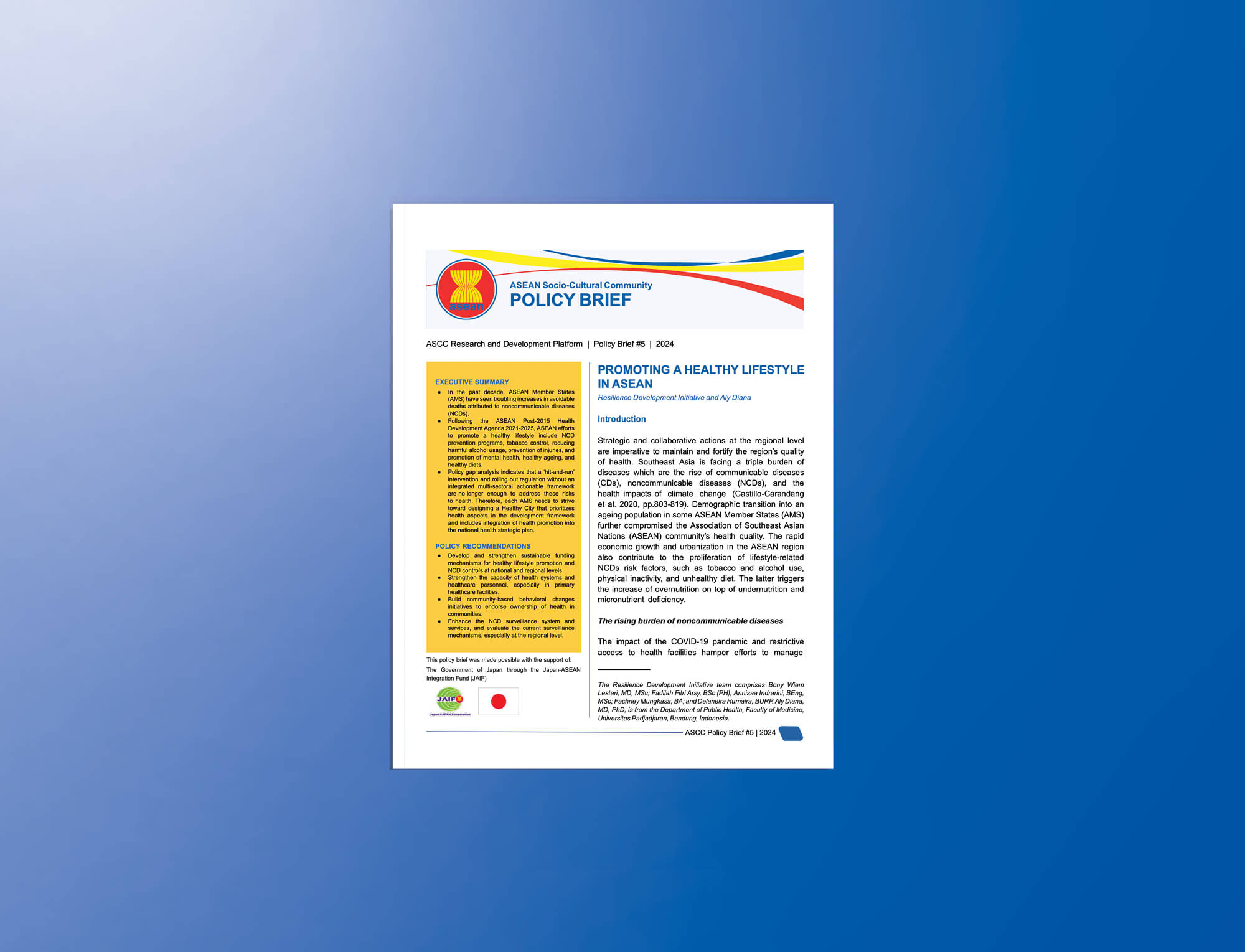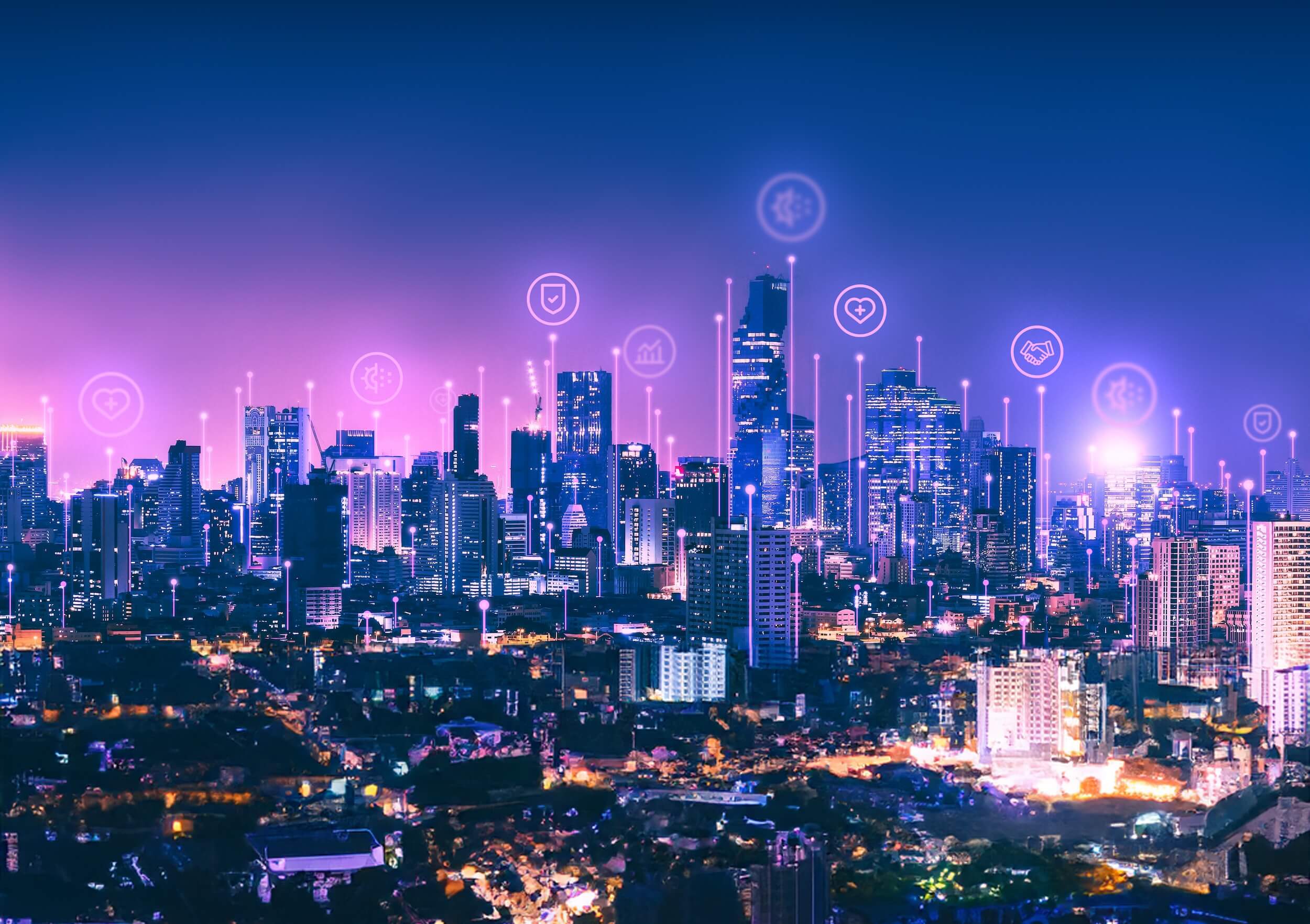



Allow me to begin with an anecdote that I believe sums up my concern in this article: Several years ago, while filming a documentary series about our common Southeast Asian history and identity, I persuaded the TV crew to indulge me in a social experiment of sorts.
Filming in three different capital cities of three ASEAN countries, I walked up and down the main streets of the cities with a cardboard poster that bore the image of ASEAN on it. Randomly, I would stop people in the street—mostly youngsters—and asked them if they recognised the ASEAN symbol and knew what it meant. The answers I got from passers-by were random and mostly wrong. Some said “McDonalds,” some said “Nike or some sportswear,” some said “UN” and one even said “the Union Jack.”
I was staggered by the findings of this simple person-to-person street survey, but at the same time was not that surprised. After being in existence for more than half a century, it seems that many Southeast Asians do not know about the Association of Southeast Asian Nations, or even recognise its symbol. What does that tell us about who we are, and the state of Southeast Asian studies today?
I raise these concerns as an academic whose work focuses on the history and socio-political-cultural development of the countries of Southeast Asia, and more importantly as an academic whose work on the countries of the region begins with the premise that every state in Southeast Asia today owes its identity and existence to the region that gave birth to it.
I wish to address what I think are the reasons for this curious form of mass amnesia—the forgetting of our common Southeast Asian roots—and why this is problematic for Southeast Asians today. My argument is that Southeast Asians are the ones who need to learn about Southeast Asia the most, and the absence of this basic knowledge at the ground level will leave our societies hobbled in the future, unable to cope with the pressures and challenges of globalisation at this stage of late post-industrial capitalism.
Let us begin with this question: How, and when, did we Southeast Asians forget our common history and identity?
The answer lies somewhere during the 18th to 19th centuries when colonial encounter created a historical-cultural rupture and when Southeast Asia was divided by the different Western colonial powers that descended upon the region and began to carve it up into separate chunks that fit into their respective imperial maps.
That Southeast Asia’s political borders today are colonial borders is obvious to anyone with a rudimentary grasp of history. Peninsula Malaysia was once intimately connected with Sumatra, and the Straits of Malacca was the corridor that connected the two halves of this common Malay-speaking world. But the Anglo-Dutch Treaty ended that by effectively splitting the two parts of this world into two separate halves, Sumatra being drawn into the orbit of the Dutch colonial East Indies and the Malay Peninsula later governed as British Malaya.
Centuries of long-established people-to-people contact came to a gradual end, thanks to the imposition of restrictions on movement, migration and settlement, and with the end of Empire the two halves of this Malay-speaking world would evolve into two separate countries: Malaysia and Indonesia.
The same can be said about the fluid world that once existed around the Sulu and Sulawesi Seas, that connected Mindanao, Sulu, Palawan (in present-day Philippines) with Brunei and North Borneo along with Sulawesi. The once free-flowing movement and trade were cut off as the three areas came under British, Spanish and Dutch colonial rule.
In the wake of decolonisation, these areas have not reconnected in any significant way, and the present-day borders (both terrestrial and maritime) between Malaysia, Indonesia and the Philippines still bear the marks of the colonial encounter.
The related question therefore arises: Why hasn’t Southeast Asia reconnected with its past in the wake of decolonisation? For all our talk of Asian values and a common Asian identity, we remain trapped in the compartmentalising logic of the static, fixed nation-state—which, in fact, is merely an extension of the colonial state of the past.
The answer to that question lies in the histories we have written since the end of colonial rule, and in particular, in the manner in which all the official historical narratives of postcolonial Southeast Asia have been in fact official state narratives that begin and end with the nation state as the starting point as well as the main purpose of history.
That almost all of the official histories of the states of Southeast Asia have been state-centric should not come as a surprise to any, for this merely reflects the very real concerns of the first generation of postcolonial historians of Southeast Asia.
From the 19th century onwards, the rise of anticolonialism in and across the region gave birth to a whole generation of nationalists who saw state as the ultimate end-goal of the nationalist anti-colonial project. Having seen the end of Empire, the first generation of native historians began writing their respective national histories with a number of goals in mind: To rewrite the history of Empire which casts the colonial power as the conqueror and aggressor; to overturn the violent hierarchies that place native identity and agency at an inferior, subjugated level; to state in the most positive terms the value of native identity and agency while highlighting the injustices of imperialism and colonialism from the point of the view of the (formerly) colonised subject, etc.
Having won the state, the first generation of nationalist historians sought to place the state above all else, but in the course of doing so, they also inadvertently repeated the fundamental error of Empire by perpetuating the divisive politics of imperialism.
This is why when we look at the national histories of our part of the world, they are precisely that: National histories that recount primarily the histories of specific individual nations, and not the region that was their common cradle. So the official history of Singapore is a history that focuses on Singapore; the official history of Indonesia privileges Indonesia above all else; the official history of Malaysia foregrounds Malaysia before others, etc.
As a result of this, the first generation of postcolonial Southeast Asian students across the region learned more about their respective countries but were not taught or reminded of the common heritage and long history of cultural-economic-social interaction across the region prior to the colonial encounter. In short, we are taught about the histories of our particular countries, but we fail to understand where our countries are located and how that longer, older and wider history of Southeast Asia had set the stage for the development of our national cultures and identities as we know them today.
The net result of this state-centric approach to history-writing is two-fold: On the one hand it accounts for the amnesia about our common regional past, and on the other, it also accounts for the somewhat narrow cultural perspectives that we see and read off the pages of our history books at school. But perhaps more worrying still is how such nationalist historical narratives have become the grand narrative that dictates our idea of nationalism—which can be sometimes particular, exclusive and bellicose—and contributes to misunderstandings when it comes to sensitive claims to cultural patrimony and identity politics.
Living as we do in an age where identity politics has become normalised and popular, we see its variants everywhere including here in our own region too. At times, some Southeast Asian states have been adamant in making their culturally exclusive claims, and these instances of contestation can degenerate to the level of the absurd and comical.
For all our talk of modernity and progress, Southeast Asian states can still wage a war of words when contesting the origins and patrimony of things like chicken rice and fried noodles, forms of music and forms of material culture such as Batik cloth, etc. Yet the statesmen of the region—themselves the products of that earlier generation of state-centric historical education—have failed to note that for centuries Southeast Asians were in constant conversation with one another, exchanging and sharing vocabularies, languages, idioms, geographies, and epistemologies.
Things such as Batik or forms of music developed long before the coming of colonial rule and they were developed by Southeast Asians in a Southeast Asia that was borderless and more fluid. It would be outlandish to suggest that whoever invented Batik for the first time centuries ago did so with the enhanced historical foresight that one day in the distant future it would be the exclusive cultural patrimony of a particular Southeast Asian state, particularly when the name-concepts of the “Republic of Indonesia” or “Republic of the Philippines” or “Federation of Malaysia” did not even exist then!
The forms of narrow ethno-nationalism that we see in some parts of Southeast Asia today is the result of the manner in which we—Southeast Asians—have become disconnected from one another thanks to the way in which we understand and write our own histories, which have omitted the longer period of pan-Southeast Asian fluid movement and cultural sharing that gave birth to the cultures and languages we designate as “national” today.
If this is not remedied soon, I would argue that we would not only be making a serious mistake in our understanding of our own history but worse still would be guilty of perpetuating that “colonial divorce” that separated us from one another when our region was cut up and broken into separate colonies in the recent past. It is therefore incumbent upon this present generation of Southeast Asian academics, historians in particular, to reconnect our countries and societies to our shared regional past and identity, and this ought to be done sooner than later through a serious and sustained attempt to correct the state-centric bias found in our official histories.
Related to this is the need to create a new generation of young ASEAN citizens who see and feel themselves to be Southeast Asians. I raise this as my closing concern as I happen to be a Southeast Asian academic based in a Southeast Asian university teaching Southeast Asian students, almost all of whom share the concerns of their millennial generation.
Southeast Asia has embraced globalization with almost no inhibitions whatsoever and with this has come not only innovation and development but also social-cultural shock and to some extent trauma for many. In the decades to come, we are likely to see further high-end high-tech innovation that will pose considerable challenges for all forms of labour-intensive manufacturing, a radical restricting of our export-oriented economies, the further dehumanisation of production as IT and AI take over, and a possible shrinking of the middle classes.
All of this is happening in a region with more than 600 million citizens and where many of those millennials we speak about have middle-class aspirations that may not materialise if our economies are not restructured in time and if the education system does not adapt to the realities to come. In the midst of this mobility—social mobility, professional mobility and geographical mobility— will be increasingly important. Simply put, in order to survive the next generation of Southeast Asians must be able to move all the time—moving between jobs, moving between companies, moving between countries. But how is this to happen if we do not even know much about the region we live in, and understand the common features of the world we inhabit?
It is my contention that in the future there will be two types of ASEAN citizens: On one side will be the pan-ASEAN Southeast Asians who know the region, are comfortable in the region and who regard the region as a whole as their extended homeland. Then, on the other hand, there will be those who are static and professionally and occupationally immobile (or worse still, regressing), who see ASEAN as a threat and who see all forms of inter-ASEAN cooperation as a detriment to their well-being.
To build an ASEAN that is cohesive and relevant in the future, we need to expand the numbers of the f irst constituency while reducing the numbers of the latter. Failure to do that would mean that our region may well see the rise of even more exclusive and parochial forms of populism and nationalism that in turn will hinder our efforts to share the prosperity of ASEAN with all who live here. It is for these reasons that I have always argued that more than anyone else in the world, it is Southeast Asians who need to learn more about Southeast Asia.







